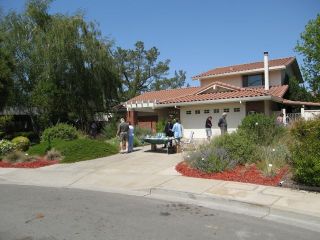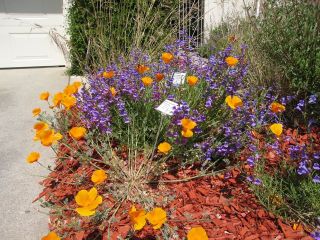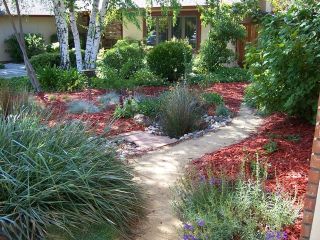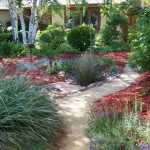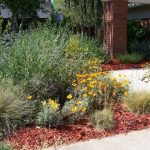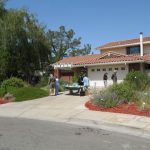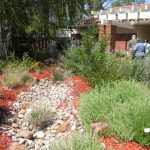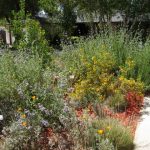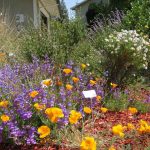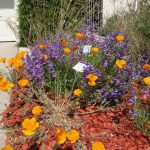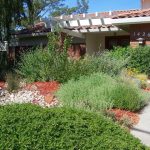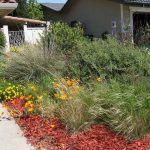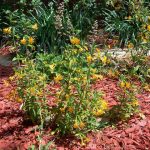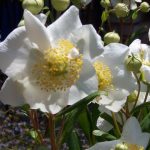Lot size: 2,500 square foot front garden on tour; 100% native
Garden Age: Native garden was planted in 2003
Years on the Bringing Back the Natives Garden Tour: 6
Showcase Feature Undulating berms provide drainage for chaparral plants, which are separated from a meadow by a dry creek bed containing mixed cobbles and boulders. This mostly local native plant garden, certified as a Wildlife Habitat by the National Wildlife Federation and beloved by the neighborhood children, was designed and installed by Alrie Middlebrook of Middlebrook Gardens.
Other garden attractions
• Plants receive no summer water.
• The original garden—lawn, juniper and ivy—was demolished. Check out the “before“ photos.
• A dandy binder of information on the native plants in the garden has been compiled by Anne; ask her if you are interested in seeing this.
• The mulch, which keeps weeds under control, is bark made from recycled pallets.
Gardening for Wildlife:
Native nectar, pollen, fruit, nut and seed producing plants, such as monkeyflower, coyote mint, manzanita, California fuchsia, wooley blue curls, sage, and buckwheat provide food, shelter, and nesting areas for wildlife. Quail stroll through the garden with their chicks. Butterflies and bumblebees adore the coyote mint, sage, and wooley blue curls. Hummingbirds are attracted to the sage, monkeyflower, fuchsia, and Keckelia. Songbirds and spiders are among the other happy residents in this garden.
Garden Talk: Alrie Middlebrook will be available throughout the day to discuss how she worked with Anne and Ed to design the garden, review the problems they encountered, and describe the merits of the plants that were installed. Bring photos of your own garden to obtain design advice and plant recommendations.


